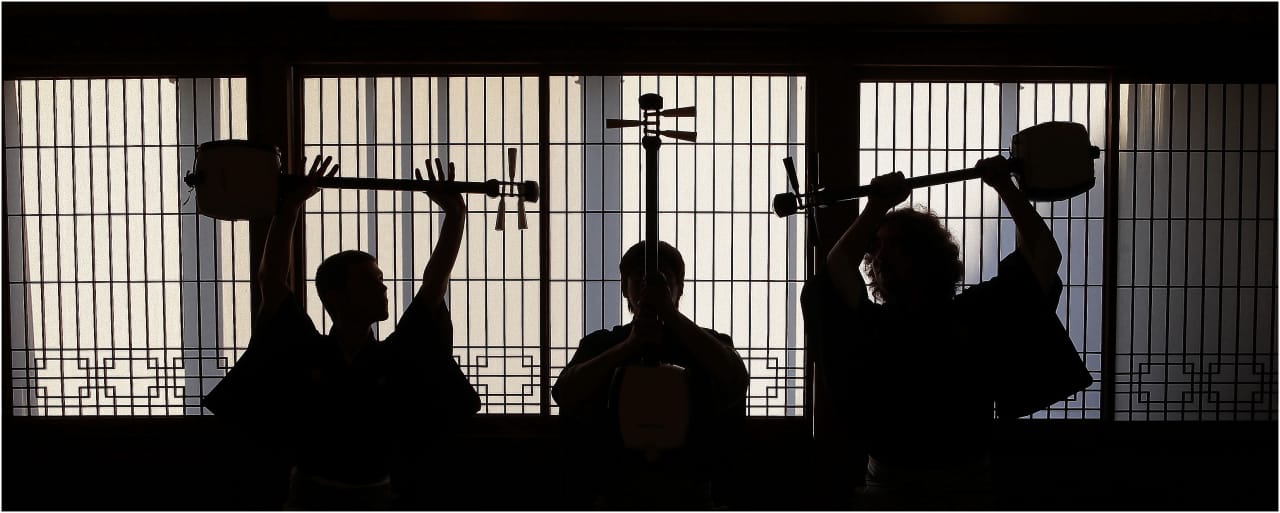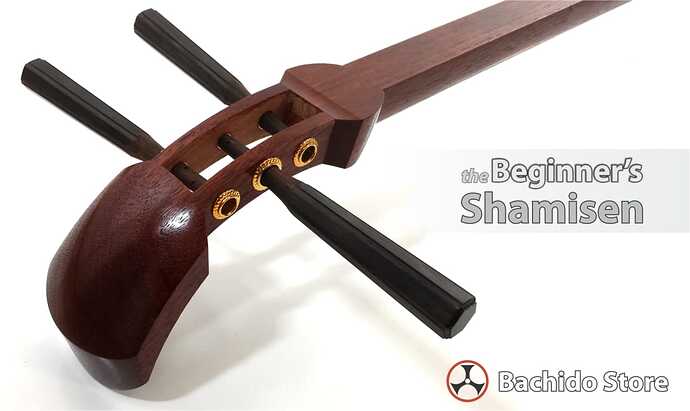The Versitile Shamisen
“The most unique quality of the shamisen is it’s ability to be percussive and melodic at the same time” – Kyle Abbott, Founder of Bachido
What is shamisen?
The shamisen is a three stringed lute from Japan, with growing international interest. Similar to a banjo, the body is covered with a stretched skin. (synthetic or natural) Traditionally, the three strings are made of wound silk threads, (contributing to the distinct sound of the shamisen) tightened by the three large tuning pegs on the headpiece. The neck is fretless and about half the width of a guitar neck.
How is the shamisen played?
The player places the shamisen body (called the dou) on their thigh and lays their hand over the body. Typically, the player plays the shamisen with a large ice scraper-sized plectrum called the ‘bachi’. The bachi almost acts as a drumstick, because it strikes the skin as well as the string.
The most unique quality of the shamisen is it’s ability to be percussive and melodic at the same time. It can be played quiet as a whisper or, if played forcefully, can be clearly heard outside on a crowded street.
The player holds the neck up with their left hand (or right hand, if left-handed) and changes the pitch simply by pressing the strings down. The fretless neck of the shamisen is initially daunting, but with just a little practice and muscle memory, the shamisen is an incredibly fun instrument to learn.
Also, adhesive position marks are used to help identify where to press the string.
The tuning pegs are called itomaki. The strings are tied to them, tightened and held in place with friction.
Why is the shamisen unique?
The most unique quality of the shamisen is it’s dual ability to be percussive and melodic. Using a large plectrum to strike the string and skin, you’re able to simultaneously bring out the tone of a drum and a melodic lute at the same time! These qualities combined with the fretless neck makes the shamisen an incredibly versatile instrument.
Another unique feature of the shamisen is the droning buzz called ‘sawari’. The buzz is created when the resonating string lightly touches a ridge (called the sawari yama) near the headpiece (called the tenjin), causing the droning buzz to occur. It is believed the sawari effect was inspired by the same effect of an Indian Sitar, which is called ‘Jawari’.
Can you play other genres with shamisen?
The shamisen is very capable of appropriately blending into almost any cultural music or genre. Here are just a few examples: Traditional Japanese, Appalachian Folk, Lady Gaga Covers, Progressive Jazz.
Why is the plectrum so huge?
This is an aesthetic addition by the early Biwa players of Japan, who use an even larger plectrum for their instrument. Though it’s cumbersome at first, the bachi (plectrum) allows the relaxed player to use the power of their whole arm to execute a solid, percussive strike with ease. The shamisen can also be played simply with your finger, guitar pick, or more!
Is it difficult to play?
In my (Kyle Abbott’s) opinion, the shamisen is very beginner-friendly. After all, it only has three strings! Similar to a ukulele, everyone can pick up the shamisen and enjoy playing songs, while still having limitless possibilities for advanced players! Shamisen superstars like the Yoshida Brothers have made the shamisen famous with their great virtuosity, but even they played simple songs when they first started learning. Anyone, young or old can start playing shamisen.
Where can I learn to play shamisen?
Believe it or not, you can start your shamisen adventure right now! Jump to the Bachido Schoolhouse and get started with free instruction from the step-by-step Crash Course!
Where Can I Buy a Shamisen?
Until recently, it was very difficult to get a brand new shamisen outside of Japan. What’s more, the price of a good sounding shamisen would be as high as $900! Fortunately, at Bachido, we managed to acquire a high quality entry-level shamisen for a fraction of that price! This is the first time good quality shamisen have been accessible! Check out the Beginner’s Shamisen!














